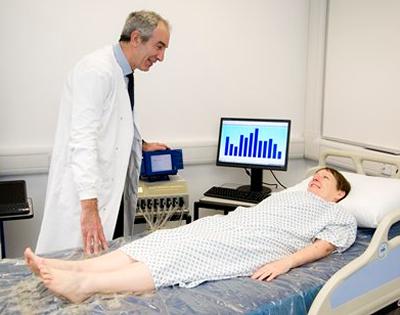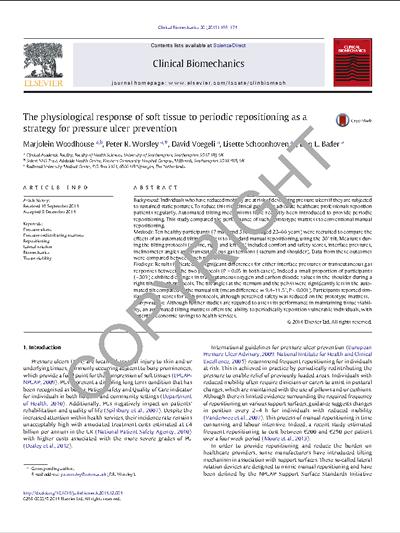Pressure Ulcers (PUs) can occur in any situations where people are subjected to sustained mechanical loads, but are particularly common in subjects who are bedridden or confined to chairs for much of their waking day

Maintaining skin and soft tissue health in patients is a key element of care and represents challenges in everyday clinical management.
The condition of pressure ulcers or decubitus (aka pressure sores, bed sores) represents a localized injury to skin and/or underlying tissue, usually over a bony prominence, as a result of pressure, or pressure in combination with shear (EPUAP/NPUAP Guidelines, 2014). Pressure Ulcers (PUs) can occur in any situations where people are subjected to sustained mechanical loads, but are particularly common in subjects who are bedridden or confined to chairs for much of their waking day. Thus, common sites of damage include the sacrum, heel, ischial tuberosities (ITs) and the back of the head. PUs have been traditionally associated with the elderly, particularly the malnourished and dehydrated with added medical complications. However PUs affect a wider age range of subject exposed to mechanical loading whose skin is vulnerable due to, for example, immaturity in the case of neonates nursed in incubators or due to neuropathy as is common with the Spinal Cord Injured, even those engaged in wheelchair athletics.
Maintaining skin and soft tissue health in patients is a key element of care and represents challenges in everyday clinical management. The benefits of some form of pressure relief and/or redistribution have been well established for many subject groups deemed to be at high risk of developing pressure ulcers. It can be provided by a number of management strategies ranging from regular turning of the patient, which is labour intensive, to active support surfaces including a number of commercial alternating pressure air mattresses (APAMs). The use of APAMs is based on the premise that such systems, which are used in both hospital and community settings, reduce the effects of prolonged load-induced ischaemia on soft tissues overlying bony prominences, such as the sacrum and heels. For financial reasons, they are generally reserved for use with subjects deemed to be at high risk of developing pressure ulcers.

The MDVSN works closely with several support surface manufacturers to provide scientific proof of concept for new designs and materials used within a variety of devices.
Relevant References
Worsley PR and Bader DL (2012) A interdisciplinary approach to prevent sitting-acquired pressure ulcers. Posture and Mobility Group Journal, 29(2): 27-30.
Useful Downloads
Need the software?PDF Reader


